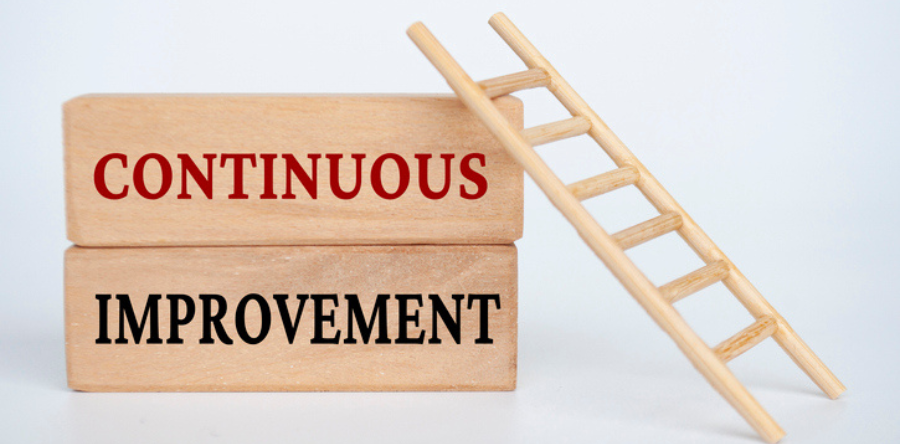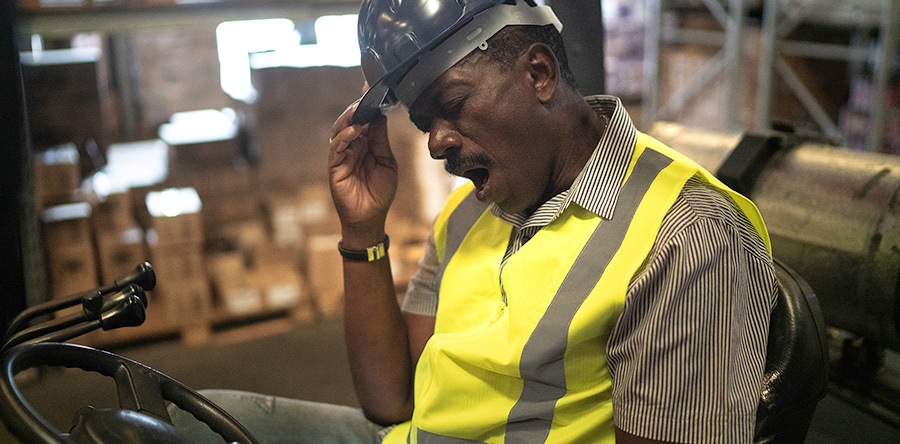Entering a new era of work two years into a global pandemic, we are facing new challenges and continued uncertainty. As leaders, we are strategic thinkers, always looking at the future to ensure our organizations succeed. It can be easy for us to get lost in urgent deliverables and mandates, especially when we are feeling increased pressure ourselves.
However, we must remember that many of the people we lead are experiencing very real challenges and limitations in their lives. An analysis by Harvard Business Review showed that frequency with which CEO’s have been talking about issues of equity, fairness and inclusion has increased by 658% since 2018. If ignored or not handled well, these issues can translate into other issues (e.g., lost productivity, workplace conflict, increased turnover, increased workload, etc.) that amplify stress and can have negative impacts on worker mental health.
Interestingly, while the U.S. is dealing with “the Great Resignation”, recent data is showing that the situation is not as extreme in Canada. While it might take more time for us to see this trend, and some sectors might experience more problems with labour shortages than others, it is one of many issues that CEOs and leaders must navigate when steering your organizations safely into the future.
Leaders’ role in curbing workers’ return-to-workplace anxiety
Inc. recently estimated that 52% of workers expressed some degree of concern about returning to the workplace, and a Forbes article suggested that 49% of leaders have a similar fear. In another study, 73% of workers expressed concern about compliance with safety standards.
Some workers perceive returning to the workplace as losing their job flexibility. One study found that 39% would consider quitting their job if their employer were not flexible about remote work options. About 44% of employees say they want to work remotely three days a week or more post-pandemic.
For advice on coping with return anxiety, refer to the Mental Health Commission of Canada’s (MHCC’s) tip sheet.
Tips to move into the future of work with worker psychological health and safety in mind
- Change management. CEOs and leaders must understand there is no returning to the old normal. It appears that many workers may require change management and influence to convince them of the benefits of returning to a physical workplace. The future of work suggests a desire for flexibility and personalized work plans, so not all workers are likely to be back in the workplace five days a week. Develop a change management plan that outlines the concerns that employees have, how those concerns will be addressed, and how workers and their managers will be equipped and supported.
- Equip managers. Many people will have different reactions to the new world of work, and managers need to be given tools and support to manage various issues that arise in their day-to-day work. MHCC will soon release a toolkit for managers, called Leading in a Hybrid Work Environment, that covers addressing performance issues, conflict resolution, onboarding, protecting your own mental health, and recognizing declining mental health in employees.
- Technology and tools. The pace of change employees have endured over the past decade has been accelerated by the pandemic. Almost overnight, workers had to get accustomed to new technology and virtual tools. Now is the time to ensure that technology and tools are further refined and properly implemented to help them manage the new ways of work on a more permanent basis. Build in time for training and pacing to help workers catch up and get comfortable with these new tools.
- Infection prevention and control protocols. After two years of COVID-19, many people may be wary of shared spaces and surfaces. Ensure that infection prevention and control protocols are clearly outlined, communicated, and upheld. Vaccines will likely need to be considered in any return-to-work plan. APA estimates that 49% of fully vaccinated workers are somewhat concerned about returning to the workplace. Additionally, an estimated 10% of the workforce is at risk of developing a psychological problem that impairs their mental state from returning to the workplace — one of many effects of the self-isolation caused by pandemic restrictions. Leaders should educate all teams that some members may choose to continue wearing masks, which is perfectly acceptable. Create a psychologically safe workplace where it becomes the new norm for employees to wear masks for personal or health reasons.
- Civility and respect. The pandemic is just one issue that may cause anxiety and tension between workers. When preparing for the return to a shared space, leaders should discuss the challenges workers see, like wearing masks after mandates are dropped, and fears around social stigma, discrimination or harassment. Leaders are advised to be proactive and tune up respectful workplace policies to enforce zero tolerance for incivility or harassment related to the vaccines, masks, physical distancing, hygiene, or preference to work from home.
- Open channels. Institute pulse checks as a part of change management so people who feel anxious about safety can share their concerns anonymously. Demonstrating that you are sincere and want to hear workers’ concerns can reduce anxiety. Be sure to act on feedback to build trust and create a safe workplace for all.
- Boundaries, flexibility, and trust. Remember that the best way to achieve the desired results is to equip employees with what they need to deliver. Whether working in a hybrid environment, or fully in-person, providing balance while ensuring the work is done well will require setting and respecting personal boundaries, and trusting workers to follow through on responsibilities. This may be challenging with different schedules, work locations and balancing of personal and professional obligations. You can develop trust by setting clear and reasonable expectations and objectives, with respect for boundaries and balance, and measuring performance.
- Equity, diversity, and inclusion. This is a perfect time to invigorate your EDI efforts. With such a range of challenges that employees at every level of the organization face, there also comes an opportunity to bring new solutions into the work to meet the unique needs of your workers and create a more equitable and inclusive workplace. This will be particularly important in hybrid workplaces where there is a risk that people may choose to work from home to avoid experiencing discrimination, micro-aggressions or harassment in the workplace, or where workers choose to work from home to better balance work with personal obligations such as childcare or eldercare.
Take the lead to engage workers from across the organization and remove barriers that interfere with involvement, influence, growth, development, and socializing to prevent greater imbalances from developing. Refer to the MHCC’s guide, How Employers Can Help Women Who Are Returning To Work for more advice.
Above all, this transition will require leaders to be patient. Returning all workers to the workplace physically, psychologically, and emotionally will require time. Workers will need time to feel comfortable getting into a new routine, and some may be challenged more than others during the transition.
The pandemic’s fallout has impacted many workers’ mental health, so a change of routine will be stressful for some. Some employees may feel bad because they do not think they can make the transition as well as their peers. Leaders who are empathetic, patient and flexible are more likely to create space for these workers to speak up. This will also allow you to provide assistance or refer to mental health supports (e.g., EFAP) when appropriate.
Get to know the authors – Dr. Bill Howatt and Michel Rodrigue

 Dr. Bill Howatt and Michel Rodrigue
Dr. Bill Howatt and Michel Rodrigue



